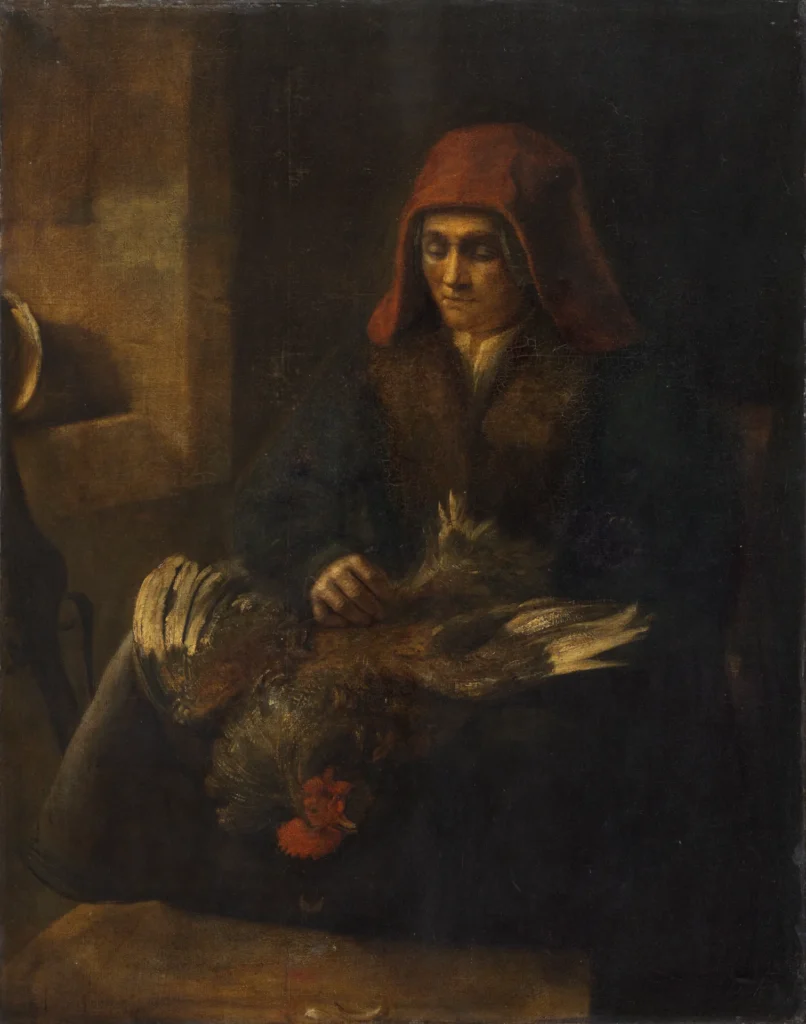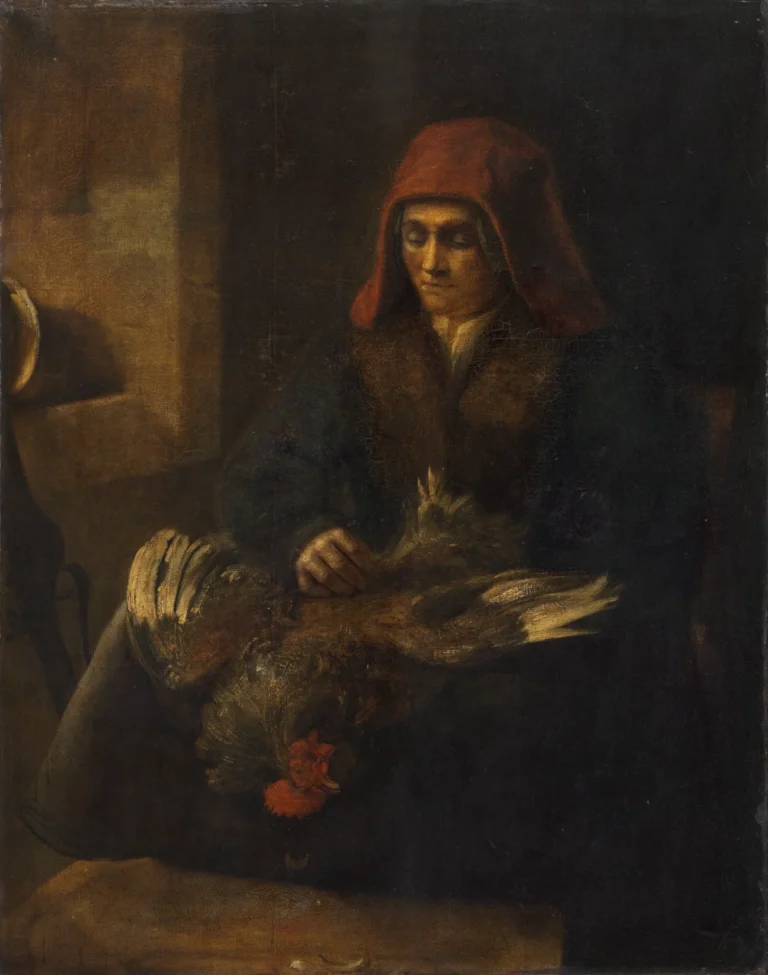The Old Woman plucking a Fowl
The Old Woman Plucking a Fowl is a striking work traditionally attributed to the master Rembrandt van Rijn, though its authenticity remains a subject of debate. Originating in the 17th century, the painting presents an engaging portrayal of an elderly woman engaged in the act of plucking fowl, showcasing a moment of domestic life. However, this piece has undergone considerable restoration, obscuring its original quality and bringing forth art historical questions regarding its true authorship.
17th Century
About the Artwork
Did You Know
Liked what you see? Add it to your collection.
Enjoyed reading? Share it.
... continued
The Old Woman Plucking a Fowl
Attribution and Provenance
The painting has traditionally been associated with Rembrandt, particularly due to its mention in the 1734 sale of paintings owned by Willem Six, where a work described as "Een Hoenderwyf, van Rembrant" (A vendor of fowl, by Rembrandt) was sold.
Condition and Restoration
The painting has undergone significant alterations over the centuries. It was reworked in the eighteenth century and heavily restored in the early twentieth century. These layers of overpaint have made it difficult to determine the original character of the image.
Current State
Despite the extensive restoration, the dead bird on the woman’s lap has survived relatively intact. The execution of this animal is vigorous and bold, suggesting that the rest of the painting may have originally possessed similar qualities.
Art Historical Debate
Art historians have questioned the attribution to Rembrandt due to the painting's current state and the extensive alterations it has undergone. The painting as it appears today does not align with the typical style and quality expected of Rembrandt's work.










